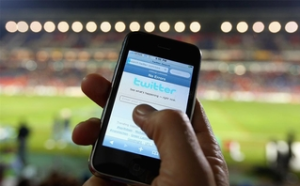Bill Belichick can get away with saying, “We’re onto [name-the-city],” each time he’s asked about a hot topic. A rookie that hasn’t played a down of football in the NFL? Not so much.
As if Dolphins’ first-round pick Laremy Tunsil didn’t have a rough enough introduction to the league, he eventually met the media in Miami Friday afternoon and according to reports, he repeatedly said that he would answer only football-related questions. That was after reporters were initially told that he wouldn’t appear because he’d suffered an allergic reaction.
If the public and reporters were suspicious, blame it on one of the biggest public relations fiascos in NFL Draft history.
The jury remains out for some regarding the question of who released a video on Twitter of the former Ole Miss OT smoking out of a gas mask bong. To say that the incriminating footage spread through social media like wildfire would be an understatement. It was more like an inferno. By the time NFL Network and ESPN reported the story, the highly rated prospect fell to the Dolphins at No. 13. Tunsil and his representatives said his Twitter account was hacked. And it didn’t stop there.
The Tunsil camp said that his Instagram account was also hacked after screen shots of a text conversation between him and an Ole Miss assistant regarding money changing hands were revealed.
Before the second alleged hack – and even though I don’t know for sure, I can’t imagine that a high draft pick would sabotage his career on one of the biggest nights of his life – I asked why Tunsil would share his social media passwords or provide access to anyone. After the second attack, I sniffed carelessness, regardless of who hit the “send” buttons. The pictures changed the conversation of the entire first round, if not the draft.
You may agree or disagree with the importance of either impropriety, but the bottom line is that each is illegal in the NFL and the NCAA, respectively. And this post is about social media and a reminder for all of us to use it responsibly.
Let Tunsil’s lesson be one for all sports and public figures
If athletes at any level ever needed a lesson why they should be careful about what they do, where they do it and with whom they do it, Thursday night was the first day of school and final exam combined.

The Tunsil story is so layered that I’m simply going to share some sports social media bullet points of do’s and don’ts for sports social media users. In this case, it also extends to traditional media conduct, as it relates to Friday’s press conference in Miami.
You may ask why we continue the conversation. I ask in return, which one of you projected “bong hit” and “Cheech ‘n’ Chong” to be mentioned in the same NFL Network broadcast during Round One of the NFL Draft?
Tunsil is lucky
Tunsil is actually luckier than others may have been. He has big talent and was still drafted in the first round. He will have a chance to prove himself on the field. Others may not be as lucky.
DO:
- Beginning in at least middle school, request that educators and coaches teach athletes about responsible social media. Raise the level of those lessons with new instructors each year. Parents, learn to use social media and share responsible habits with your kids.
- Create a social media account and secure an unsuspecting password.
- If you anticipate a high-profile life move, change your password. Shoot, when the calendar changes each quarter, change your password!
- Always consider who will see a post. If you’re an athlete, that means potentially the world.
- Before you post, ask yourself how viewers will benefit from reading or seeing a post. Will they be educated, informed or entertained (in a way your grandmother would approve)?
- Review the post before you hit “send.” Review it again. Does it incriminate you? Does it hurt others? Review it again. Ok, one more time. If you’re confident it’s good, hit “send.” (If you’re not sure, consult with a trusted advisor or sports PR and social media specialist … we want to help.)
- If you are caught with a post such as Tunsil’s, whether you send it yourself or not, own it, explain it and move on. (I think Tunsil did this to a degree Thursday night.)
*If you’re later asked about a miscue in a press conference, address the topic, answer a few questions and only after that you may request sports-only questions. The quicker you honestly discuss controversies, the faster the issues evaporate, assuming you stay “clean” going forward.
DON’T:
- Share your password with ANYONE. The only exception is your agent or publicist (not their assistants or interns, just them).
- Do anything that may be perceived improper or illegal. Cameras are EVERYWHERE.
- Get into social media spats with fans. Most that initiate them are just in it for 140 characters of “fame,” so don’t waste your time and aggravation.
- Post something and think you can later delete it. Anything posted on the internet is there FOREVER if someone truly wants to find it.
©Gail Sideman; PUBLISIDE.com, 2016
###